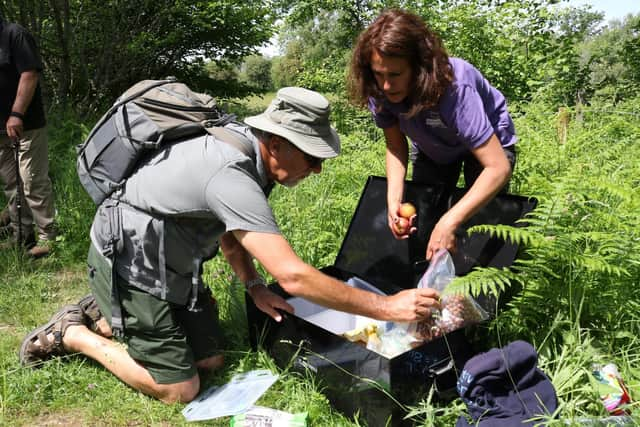Meet the rare creature making a return to a Lancashire beauty spot
and live on Freeview channel 276
The 1,000th hazel dormouse has been reintroduced to the UK by wildlife charity People’s Trust for Endangered Species (PTES), Natural England and the University of Cumbria
PTES and partners released 15 breeding pairs or trios of rare hazel dormice into an undisclosed woodland location in the Arnside and Silverdale Area of Outstanding Natural Beauty, in an attempt to save this endangered species from extinction in the UK.
Advertisement
Hide AdAdvertisement
Hide AdDormouse reintroductions have taken place annually since 1993, but the dormice reintroduced this June are part of a wider species recovery programme, ‘Back On Our Map’ (BOOM). Led by the University of Cumbria and Morecambe Bay Partnership and supported by The National Lottery Heritage Fund, BOOM is a multispecies, landscape scale project which aims to reinstate 10 locally threatened or extinct native species back into the area, including hazel dormice.


With their soft caramel fur, furry tail and big black eyes, hazel dormice are undoubtedly endearing, but sadly their numbers have declined by a staggering 51 per cent since 2000, according to PTES’ State of Britain’s Dormice 2019. They are also considered extinct in 17 English counties. Carefully releasing healthy, captive bred dormice into the right habitat is the key to bringing these charismatic creatures back from the brink.
Ian White, Dormouse & Training Officer at PTES, said: “Reintroductions are crucial to the long-term recovery of many species, but particularly hazel dormice as their decline has been so dramatic. Our first reintroduction took place in 1993, so we are thrilled that this year we’re releasing our 1,000th dormouse. This is a great milestone for conservation and a huge moment for hazel dormice in Lancashire too, as there are no known populations currently living there.”
This year’s woodland site has been carefully chosen by the BOOM team, Natural England and PTES, ensuring that the right habitat is in place and that it’ll be maintained correctly to secure the long-term survival of the reintroduced dormice.


Advertisement
Hide AdAdvertisement
Hide AdBefore being released into their new home, every dormouse undergoes a nine-week quarantine period at ZSL (Zoological Society of London), where vets conduct regular and thorough health checks. This ensures that each animal is fit and healthy prior to release, giving them the best chance of forming a healthy population in the wild.
Once all dormice have been given the green light, they are carefully transported to the reintroduction location, where staff from PTES, Natural England and the University of Cumbria, along with several volunteers, will be on hand to ensure the smooth transition from travel nest-boxes to their new woodland home.
Dr Deborah Brady, Research Fellow at the University of Cumbria, who is managing the reintroduction for BOOM, adds: “Once the dormice arrive they are placed into mesh cages that mirror the woodland. The cages are filled with the right mix of foliage, buds, berries, nuts, insects and water, and this is where the dormice will live for the first 10 days. Each cage is connected to a tree, so the dormice become acclimatised to their new surroundings. Our local volunteers will check each cage daily and will also act as monitors over the next two years to ensure all the dormice remain healthy.”
After 10 days, the cage doors are opened to allow the dormice to explore their new home. In due course, when the dormice no longer need them, the mesh cages will eventually be removed.
Comment Guidelines
National World encourages reader discussion on our stories. User feedback, insights and back-and-forth exchanges add a rich layer of context to reporting. Please review our Community Guidelines before commenting.
